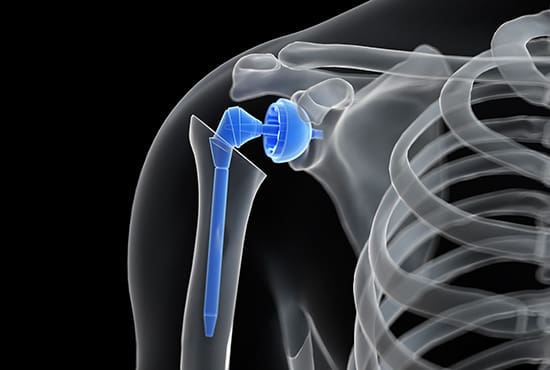What Is It?
Total Shoulder Joint Replacement is a surgical procedure meant to repair damaged and degenerative portions of the shoulder joint, often through the use of higher functioning, prosthetic components.
Your body’s shoulder joint consists of three bones: your upper arm (humerus), shoulder blade (scapula) and collarbone (clavicle). The upper arm slides into a shallow socket within the shoulder blade, creating a ball-and-socket type joint which allows for an incredible overall range of motion. Throughout the joint, cartilage surrounds the ends of each bone and keeps them from painfully rubbing against each other. An assortment of muscles and tendons strengthen and hold the joint together, while a thin, cover-layer of tissue eliminates friction by releasing small amounts of moisturizing fluid.


